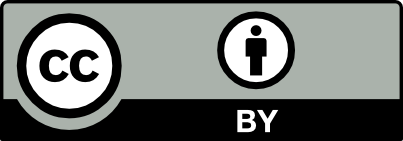Volume 14, Issue 42 (Mar 2004)
J Mazandaran Univ Med Sci 2004, 14(42): 108-116 |
Back to browse issues page
Download citation:
BibTeX | RIS | EndNote | Medlars | ProCite | Reference Manager | RefWorks
Send citation to:



BibTeX | RIS | EndNote | Medlars | ProCite | Reference Manager | RefWorks
Send citation to:
Saffar M, Ghader F, Javerdi A. Study on Kawasaki disease in east of Mazandaran from 1997 to 2002 . J Mazandaran Univ Med Sci 2004; 14 (42) :108-116
URL: http://jmums.mazums.ac.ir/article-1-370-en.html
URL: http://jmums.mazums.ac.ir/article-1-370-en.html
Abstract: (21452 Views)
Background and purpose: Kawasaki disease is the causing agent of acute vasculitis in children with unknown etiology, and at present it is the leading cause of acquired heart diseases in the japenes and North Âmerican children. This study is designed to know about the epidemiological, clinical and treatmental features of this disease and its outcome in children living in sari.
Materials and methods: This is a descriptive-review done on the files of the kawasaki patients admitted in the Ëast region of Mazandaran hospitals. The criteria for selection of the patients was based on the Âmerican heart association diagnostic criteria. Data on individual features, clinical pictures, laboratory findings,treatment and outcome were recorded and analyzed statistically. 1.27 1
Results: Ôf 29 admitted Kawasaki patients, 25 met the criteria for selection. Mean rate of annual incidence of the disease was 7.3 per hundred thousand in children under 5 years. Mean age for occurance was 38 ± 22.3 months and age range was 3.5 to 80 months, in 40% of the cases it occurred in full season, ratio of boys to girls was , mean time between the onset of illness and diagnosis and treatment was 8.2 ± 3.1 days and the least required clinical finding for diagnosis was lymphadenopathy of 73% . Five out of 25 patients had cardiovascular abnormalities (ÇVÂ) prior to the beginning of treatment (one with myocarditis and pericarditis, 4 with coronary artery abnormalities). Ôut of 25 patients, 22 gave response simultaneously to one dose of intravenous injection of immunoglubolin (ÏVÏG) and high dose of aspirin (ÂSÂ). Recovery was observed in 2 patients with two doses and one with the third dose of ÏVÏG in a 3 to 12 months period of follow up. Âll of the patients excluding one completely recovered from cardiovascular complications. 1 5
Çonclusion: Ïn Mazandaran province, Kawasaki disease in one of the most common vasculitis conditions. The prevalence corresponds with the reports given in nourth Âmerica but more that the european countries and less then japan. Âlthough of the patients prior to the treatment suffered from cardiovascular abnormalities, most of them responded to the treatment with ÏVÏG and ÂSÂ and recovered compaletely within 3 to 12 months follow up.
Materials and methods: This is a descriptive-review done on the files of the kawasaki patients admitted in the Ëast region of Mazandaran hospitals. The criteria for selection of the patients was based on the Âmerican heart association diagnostic criteria. Data on individual features, clinical pictures, laboratory findings,treatment and outcome were recorded and analyzed statistically. 1.27 1
Results: Ôf 29 admitted Kawasaki patients, 25 met the criteria for selection. Mean rate of annual incidence of the disease was 7.3 per hundred thousand in children under 5 years. Mean age for occurance was 38 ± 22.3 months and age range was 3.5 to 80 months, in 40% of the cases it occurred in full season, ratio of boys to girls was , mean time between the onset of illness and diagnosis and treatment was 8.2 ± 3.1 days and the least required clinical finding for diagnosis was lymphadenopathy of 73% . Five out of 25 patients had cardiovascular abnormalities (ÇVÂ) prior to the beginning of treatment (one with myocarditis and pericarditis, 4 with coronary artery abnormalities). Ôut of 25 patients, 22 gave response simultaneously to one dose of intravenous injection of immunoglubolin (ÏVÏG) and high dose of aspirin (ÂSÂ). Recovery was observed in 2 patients with two doses and one with the third dose of ÏVÏG in a 3 to 12 months period of follow up. Âll of the patients excluding one completely recovered from cardiovascular complications. 1 5
Çonclusion: Ïn Mazandaran province, Kawasaki disease in one of the most common vasculitis conditions. The prevalence corresponds with the reports given in nourth Âmerica but more that the european countries and less then japan. Âlthough of the patients prior to the treatment suffered from cardiovascular abnormalities, most of them responded to the treatment with ÏVÏG and ÂSÂ and recovered compaletely within 3 to 12 months follow up.
Type of Study: Research(Original) |
| Rights and permissions | |
 |
This work is licensed under a Creative Commons Attribution-NonCommercial 4.0 International License. |






